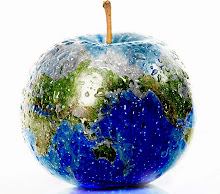Friday, 27 April and Monday, 30 April, 2007

This is the do now sheet. Use the link listed above and your home learning sheets to find the answers.




Home learning should be done a sheet of loose leaf notebook paper, headed correctly. Place the headings for each sheet in the appropriate place. Answers only. Do not write the questions.
Using information from classroom discussions and activities:
Students should be able to:
-compare and contrast plant and animal cells.
-work on the Zoom project on biodiversity.
Our do now was to use information from Sciencesaurus section 77 and 78 and home learning 7 to complete the handout. Identify each function and the corresponding organelles. For instance, number 1 shows a barbed wire fence with the words Warning: Keep Out on a sign posted on the fence that encircles an area. The function of the fence in the cell would be to protect the cell from the environment and keep unwanted materials from the cell. This would be equivalent to the cell wall in a plant cell. Students worked through the other functions and then shared with the class. Students needing extra help or that do not have access to the Sciencesaurus book can visit the following website for more information on cell organelles:
http://www.tvdsb.on.ca/westmin/science/sbi3a1/Cells/cells.htm
We spent the rest of the class period working on the Biodiversity project.
Home learning 7 can be found at the top of this blog, along with the do now cell organelle sheet.

















